Music archaeology project recreates Scottish musical culture
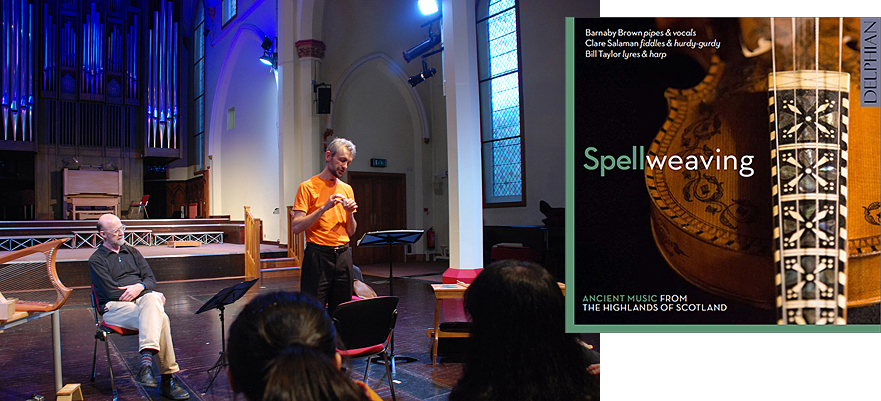 Pictured left to right: Bill Taylor and Barnaby Brown at the student workshop
Pictured left to right: Bill Taylor and Barnaby Brown at the student workshop
Thu, 04 Feb 2016 10:34:00 GMT
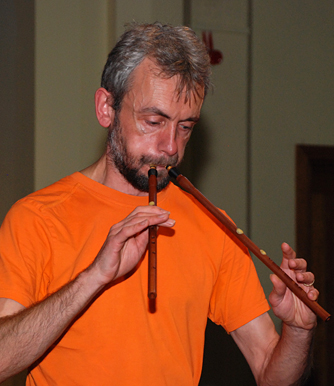 Leading trio produce CD Spellweaving on pipes, lyres, harp, fiddles and hurdy gurdy
Leading trio produce CD Spellweaving on pipes, lyres, harp, fiddles and hurdy gurdy
THREE leading exponents of historic instruments – blown, plucked and bowed – set out to recreate the ancient musical culture of the Scottish Highlands. And they did it at the University of Huddersfield.
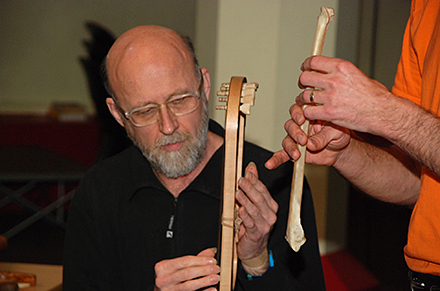 Newly released is the CD Spellweaving, featuring Barnaby Brown (pictured left) on pipes, Bill Taylor (pictured right) on lyres and harp, plus Clare Salaman (pictured below) on fiddles and hurdy gurdy. They have recreated bagpipe music from a Scots manuscript of the 1790s, much of which is drawn from centuries-old traditions. The recording was made at the University of Huddersfield, which was also the venue for the first of a series of lecture-demonstrations and concerts that the musicians will perform.
Newly released is the CD Spellweaving, featuring Barnaby Brown (pictured left) on pipes, Bill Taylor (pictured right) on lyres and harp, plus Clare Salaman (pictured below) on fiddles and hurdy gurdy. They have recreated bagpipe music from a Scots manuscript of the 1790s, much of which is drawn from centuries-old traditions. The recording was made at the University of Huddersfield, which was also the venue for the first of a series of lecture-demonstrations and concerts that the musicians will perform.
The University is the academic home of Dr Rupert Till – Reader in Music – who is a key member of the European Music Archaeology Project (EMAP), funded by the EU. One of his roles in EMAP is to co-ordinate a series of recordings that are issued on the widely-distributed Delphian label. Dr Till was at the studio controls when the Spellweaving trio came to Huddersfield to make their disc.
It consists of eight compositions selected from the 167 that are to be found in Colin Campbell’s Instrumental Book, which dates from 1797. They are not written down in conventional notation but in a unique system developed from the symbols that the master pipers of Scotland used to memorise and teach their music. On the recording, some of the music is played on a recreation of an 18th century Highland bagpipe, but some is assigned to ancient forms of the harp, lyre and fiddle, plus a primitive form of flute fashioned from a vulture bone.
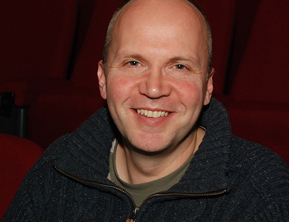 Lecture and workshop
Lecture and workshop
► Project leader Dr Rupert Till
Coinciding with the release of the CD, Barnaby Brown and Bill Taylor made a return visit to Huddersfield for the latest event to take place at the University under the aegis of EMAP – December saw the visit of John Kenny, who plays the ancient, trumpet-like carnyx. There was a full-length concert preceded by a lecture-workshop in which the two specialists gave insights into their research and their instruments. They performed pieces not only from the Campbell book but from other sources, including the Robert ap Huw manuscript of ancient Welsh harp music.
Bill Taylor demonstrated wire and gut strung harps and also two sizes of lyre, an ancient string instrument – widely played for countless centuries – that could be plucked or strummed and was also used as an accompaniment to the recital of poetry – including epics such as Beowulf. One of the lyres was a copy of an instrument discovered in the grave of a seventh century nobleman; another was based on an instrument found in the Anglo-Saxon burial site at Sutton Hoo.
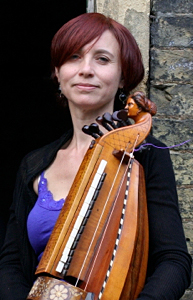
► Musician Clare Salaman
Barnaby Brown demonstrated not only the bagpipe but several double or triple reed pipes – based on ancient originals – that are inserted directly into the mouth and played using a technique known as circular breathing, enabling him to sustain the sound continuously. The recital saw the first public outing for a meticulous recreation of a Graeco-Roman aulos – a double pipe – the original of which was discovered in Egypt and is now in the Louvre. Barnaby Brown had only recently been supplied with special reeds for the instrument and he gave the University of Huddersfield audience a sample of its mysterious, mellow sound. It was an instrument of huge potential, he said.
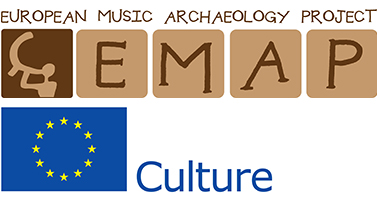 Central to the lecture-recital at the Spellweaving event was an exploration on “vocabelising”, the system of notating music using symbols. It could then be sung as a means of teaching and memorising complex patterns. It was shown how there are similarities between the use of vocabelising to teach the Highland bagpipe, the Welsh harp and – to the present day – the elaborate rhythms mastered by players of the Indian tabla drum. The recital audience was invited to vocabelise one of the bagpipe compositions notated in the Colin Campbell manuscript.
Central to the lecture-recital at the Spellweaving event was an exploration on “vocabelising”, the system of notating music using symbols. It could then be sung as a means of teaching and memorising complex patterns. It was shown how there are similarities between the use of vocabelising to teach the Highland bagpipe, the Welsh harp and – to the present day – the elaborate rhythms mastered by players of the Indian tabla drum. The recital audience was invited to vocabelise one of the bagpipe compositions notated in the Colin Campbell manuscript.
Vocabelising is an excellent form a pedagogy, according to Barnaby Brown. “The secret is to have the music inside you before you put it on an instrument,” he said. “Singing it how you get a piece into your brain and your body.”
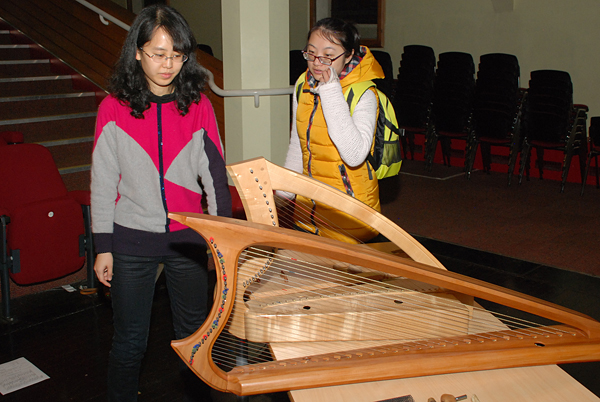 Students get to grips with the instruments at the workshop.
Students get to grips with the instruments at the workshop.
-
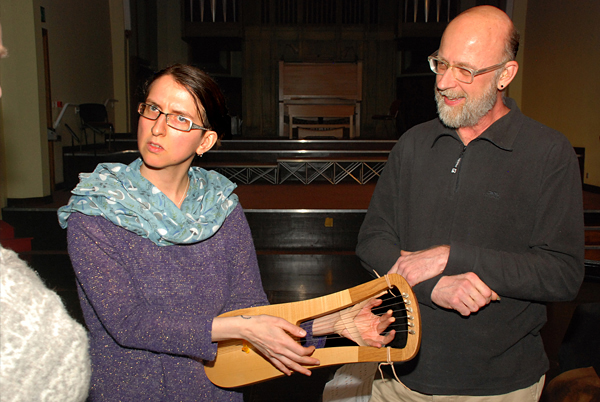 Further information about the European Music Archaeology Project can be obtained from Dr Rupert Till on 01484 472141 or email rupert.till@hud.ac.uk.
Further information about the European Music Archaeology Project can be obtained from Dr Rupert Till on 01484 472141 or email rupert.till@hud.ac.uk.
With the support of the Culture Programme of the European Union







